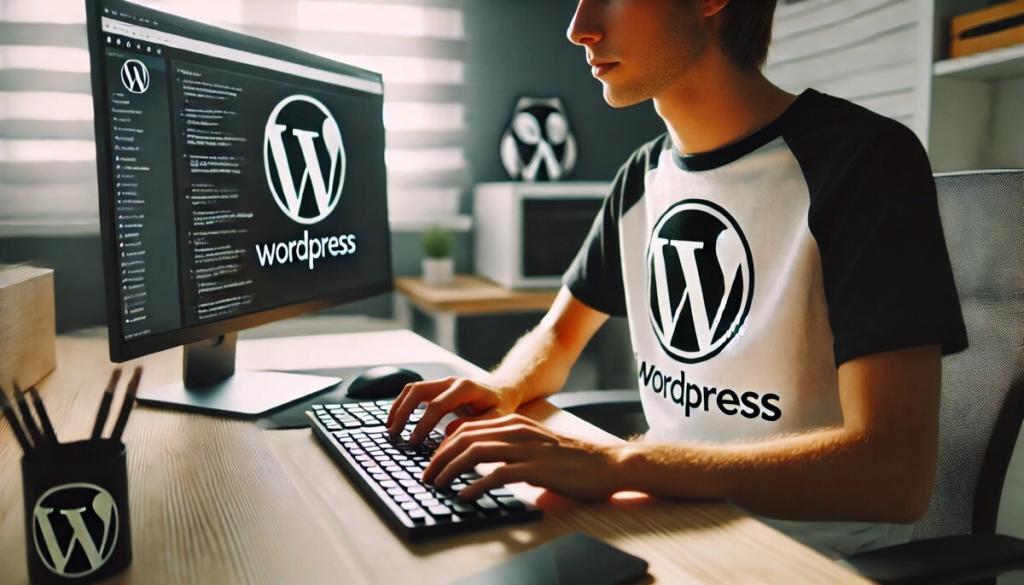
How to Keep Your WordPress Site Running Smoothly
A WordPress site is a powerful tool for anyone who wants to create a blog, an e-commerce store, or a portfolio. To maintain its functionality and performance over time, it requires constant upkeep. Without proper maintenance, your website can slow down, experience downtime, or become vulnerable to security risks. Keeping your WordPress site running smoothly doesn’t have to be difficult or time-consuming. With a few simple steps, you can make sure that your site stays in top shape and continues to deliver a seamless experience for your visitors.
Keep WordPress Updated
Regular updates are crucial as they often include bug fixes, performance improvements, and, most importantly, security patches. An outdated version of WordPress leaves your site vulnerable to security breaches, and you might miss out on valuable new features and improvements. The most important step in keeping your WordPress site running smoothly is to make sure that you always use the latest version of WordPress, and if you prefer a hassle-free approach, think about opting for white label WordPress maintenance services to handle updates for you. Update your themes and plugins regularly to avoid compatibility issues and make sure your site remains secure.
Choose the Right Hosting Provider
The performance of your WordPress site depends heavily on your hosting provider. A reliable hosting provider secures fast load times, minimal downtime, and robust security for your site. If you notice your site slowing down, think about upgrading your hosting plan. Shared hosting may be a cost-effective solution for smaller websites, but as your site grows, you might need to switch to VPS (Virtual Private Server) or dedicated hosting. Look for hosting providers that specialize in WordPress and offer optimized environments for better performance, security, and support. Choosing the right hosting provider can significantly impact the speed and stability of your site.
Optimize Your Website’s Speed
Site speed is a crucial factor in user experience and SEO rankings. A slow website can lead to higher bounce rates and decreased traffic. To keep your site fast and responsive, make sure you optimize your images by compressing them without sacrificing quality. Tools like TinyPNG or Smush can help you automatically reduce the size of images before uploading them to your site. You should also think about enabling browser caching to store certain files in a user’s browser, reducing the need for reloading every time they visit. A caching plugin like W3 Total Cache or WP Rocket can help speed up page load times by caching dynamic content.
Regularly Back Up Your Website
Backing up your WordPress site regularly is important for preventing data loss. Whether due to a technical issue, a security breach, or an accidental deletion, having a backup can save you from losing hours or days of work. You can manually back up your site, but using a plugin like UpdraftPlus or BackWPup will automate the process, allowing you to schedule backups that are stored securely on cloud platforms like Google Drive, Dropbox, or Amazon S3. Make sure you store backups in multiple locations to ensure you have a reliable copy of your site if disaster strikes.
Data Protection
If your site becomes compromised or deleted due to unforeseen circumstances, having a backup gives you peace of mind, knowing you can restore everything. In case of a security breach, hackers might alter or delete your content, which could be devastating for your site. Backups allow you to roll back to an earlier version of your site, making sure that the latest data loss or modification is minimized. It’s important to back up both the WordPress database (which stores all your posts, comments, and settings) and your site’s files (like themes and plugins). By automating the backup process with a plugin, you eliminate the risk of forgetting to perform manual backups, securing consistency and reliability in your data protection strategy.
Optimize Your Database
Your WordPress database can become bloated with unnecessary data, such as post revisions, spam comments, or unused plugins. This excess data can slow down your site and affect its performance. To keep your database optimized, you should regularly clean up and remove unnecessary data. Plugins like WP-Optimize or WP-Sweep can help you easily remove unused content and optimize your database tables. Think about using a database optimization plugin that will automatically clean up your database on a regular schedule to prevent performance issues.
Strengthen Your Security
A compromised site can result in loss of data, a damaged reputation, and financial losses. To protect your WordPress site from hackers, you should take a multi-layered approach to security. Start by using a strong password for your WordPress admin account and changing it regularly. Install a security plugin like Wordfence or Sucuri to monitor and block suspicious activity. Use SSL encryption (HTTPS) to secure data between your website and its visitors, even if you handle sensitive information like payment details. Regularly scanning your site for malware and keeping your plugins and themes up-to-date are also key components of website security.
Use Quality Themes and Plugins
The themes and plugins you choose for your WordPress site can have a major impact on its performance and security. While it’s tempting to install multiple plugins to add new features, it’s important to be selective about the ones you use. Too many plugins can slow down your site and increase the risk of conflicts or security vulnerabilities. Always choose well-coded plugins and themes from reputable sources, and avoid using outdated or unsupported options. Make sure to deactivate and delete any plugins or themes you no longer use to reduce clutter and minimize potential security risks.
Monitor Website Uptime
Website uptime is a critical factor in maintaining the smooth operation of your WordPress site. If your site experiences frequent downtime, visitors may not be able to access your content, leading to frustration and lost opportunities. To make sure your site stays up and running, you should monitor its uptime regularly. There are various uptime monitoring tools available, such as Uptime Robot or Pingdom, that send you notifications if your site goes down. Most hosting providers offer uptime guarantees, but it’s always a good idea to monitor your site’s performance independently to detect any issues early on.

Maintaining a WordPress site requires consistent effort, but by following the steps outlined above, you can make sure that your website runs smoothly, remains secure, and delivers an excellent user experience. Regular updates, optimized performance, strong security measures, and effective backup strategies are the foundation of a successful WordPress site. By staying on top of these tasks, you’ll avoid common pitfalls, protect your data, and keep your visitors engaged. Regular maintenance is the key to running a successful WordPress site, so make it a priority and enjoy the benefits of a well-performing online presence.
